Phone deep space: how NASA accelerates interplanetary communications
“There is practically no place to improve technology working at radio frequencies. Simple solutions end "
November 26, 2018 at 22:53 Moscow time, NASA did it again - the InSight probe made a successful landing on the surface of Mars after entering the atmosphere, descending and landing maneuvers, which were later dubbed "six and a half minutes of horror." A suitable description, because NASA engineers could not find out immediately whether the space probe was successfully seated on the planet's surface, due to the time delay of communications between Earth and Mars, which was about 8.1 minutes. During this window, InSight could not rely on its more modern and powerful antennas - everything depended on the old-fashioned UHF communication (this method has been used for a long time everywhere, from television and radio to Bluetooth devices).
As a result, critical data on the state of InSight were transmitted on radio waves at 401.586 MHz to two Kubsat satellites, WALL-E and EVE, which then transmitted data at a speed of 8 Kbps to 70-m antennas located on Earth. The Kubsatas were launched on the same rocket as the InSight, and they accompanied him on a journey to Mars to observe the landing and immediately transfer the data home. Other orbital Martian ships, for example, the Martian reconnaissance satellite (MLS), were in an uncomfortable position and could not provide for the first time the exchange of messages with the landing module in real time. It’s not to say that the whole landing depended on two experimental Kubsats each about the size of a suitcase, but the MPC could only transfer data from InSight after an even longer wait.
The InSight landing actually tested the entire communications architecture of NASA, the Mars Network. The signal of the InSight landing module transmitted to the orbiting satellites would have reached Earth in any case, even if the satellites had failed. WALL-E and EVE were needed for instant information transfer, and they coped with it. If these Kubsatas did not work for some reason, the MPC was ready to play their role. Each of them worked as a node on a network similar to the Internet, sending data packets through different terminals consisting of different equipment. At present, the most effective of them is the MPC, which is able to transmit data at speeds up to 6 Mbit / s (and this is the current record for interplanetary missions). However, NASA had to work with much lower speeds in the past - and in the future it will need much faster data transfer.
')
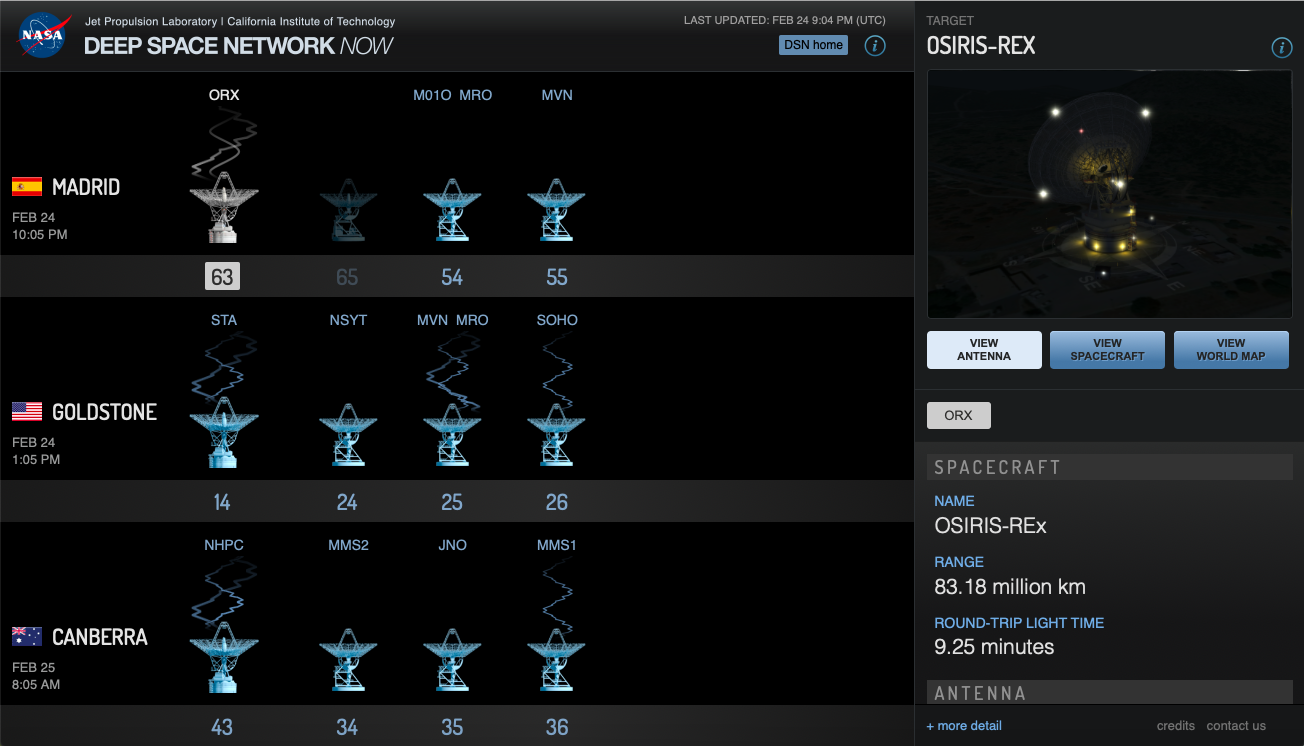
Like your ISP, NASA allows Internet users to check connectivity with spacecraft in real time.
Space communications network
With the increasing presence of NASA in space, improved messaging systems constantly appear, covering more and more space: at first it was a low near-earth orbit, then a geosynchronous orbit and the Moon, and soon the communications went deeper into space. It all started with a rough portable radio, with which the US military bases in Nigeria, Singapore and California received telemetry from Explorer 1, the first satellite successfully launched by the Americans in 1958. Slowly but surely, this basis has evolved into today's advanced messaging systems.
Douglas Abraham, Head of Strategic and Systems Forecasting at the NASA Interplanetary Network Directorate, emphasizes three independently developed networks for transmitting messages in space. The Near Earth Network works with spacecraft in low-Earth orbit. “This is a set of antennas, mostly from 9 to 12 m. There are several large ones, 15-18 m,” says Abraham. Then, above the geosynchronous orbit of the Earth, there are several tracking and transmitting satellite (TDRS) satellites. “They can look down on satellites in low Earth orbit and communicate with them, and then transmit this information via TDRS to the ground,” explains Abraham. “This satellite data transmission system is called the NASA space network.”
But even TDRS was not enough to communicate with the spacecraft, which went far beyond the orbit of the moon, to other planets. “So we had to create a network covering the entire solar system. And this is the Deep Space Network ”[Deep Space Network, DSN], says Abraham. The Martian network is an extension of the DSN .
Given the length and plans, DSN is the most complex of these systems. In fact, this is a set of large antennas, from 34 to 70 m in diameter. At each of the three DSN sites, there are several 34-meter antennas and one 70-meter antenna. One site is located in Goldstone (California), another near Madrid (Spain), and the third in Canberra (Australia). These sites are located approximately 120 degrees from each other around the globe, and provide round-the-clock coverage for all spacecraft outside the geosynchronous orbit.
34-meter antennas are the basic equipment of DSN, and there are two types of them: old high-performance antennas and relatively new waveguides. The difference is that the waveguide antenna has five precise RF mirrors that reflect the signals through the pipe to the operator’s underground, where the electronics analyzing these signals are better protected from all sources of interference. 34-meter antennas, working individually or in groups of 2-3 plates, can provide most of the communications required by NASA. But for special occasions, when the distances become too large even for a few 34-meter antennas, the DSN control uses 70-meter monsters.
“They play an important role in several cases,” says Abraham of large antennas. The first is when the spacecraft is so far from Earth that it will be impossible to communicate with it using a smaller plate. “Good examples would be the New Horizons mission, which flew much further than Pluto, or the Voyager spacecraft, which is outside the solar system. Only 70-meter antennas are able to get through to them and deliver their data to Earth, ”explains Abraham.
The 70-meter plates are also used when the spacecraft cannot operate with an amplifying antenna, either because of a planned critical situation such as going into orbit, or because something is going wrong. A 70-meter antenna, for example, was used to safely return Apollo 13 to Earth. She also adopted Neil Armstrong's famous phrase, “A small step for a man, a giant step for humanity.” And even today, DSN remains the most advanced and sensitive communications system in the world. “But for many reasons, it has already reached its limit,” warns Abraham. - There is practically no place to improve technology working at radio frequencies. Simple solutions end. "
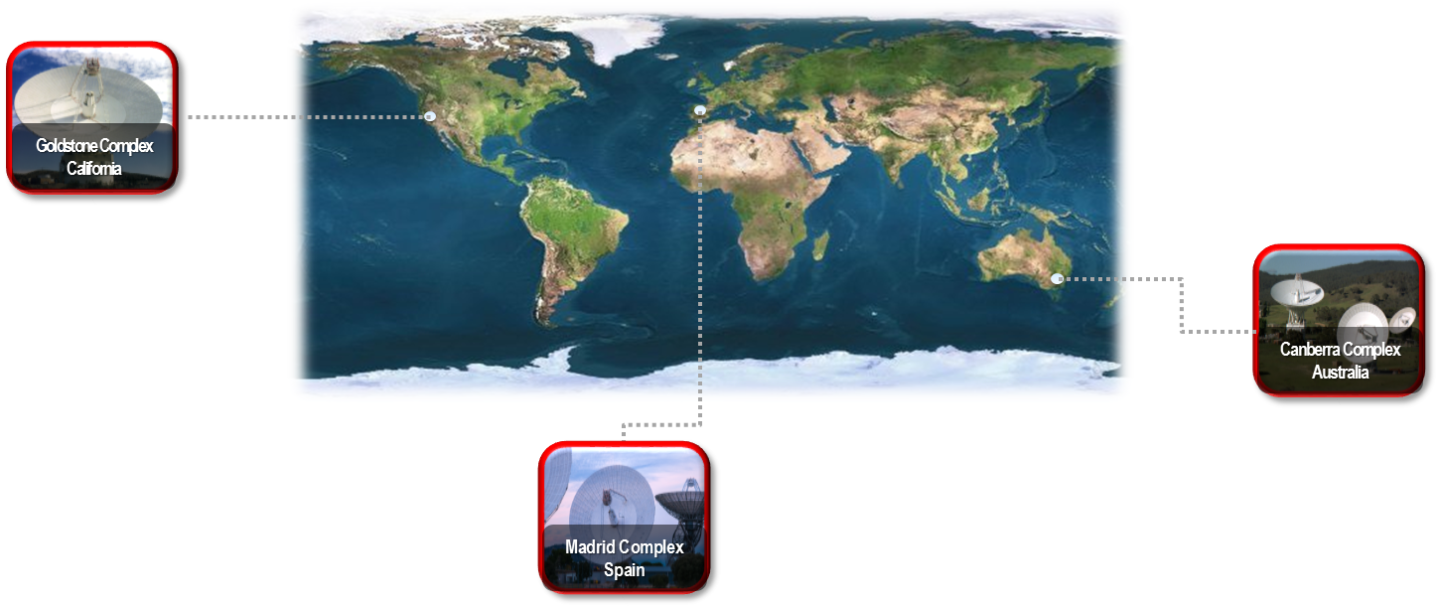
Three ground stations 120 degrees apart
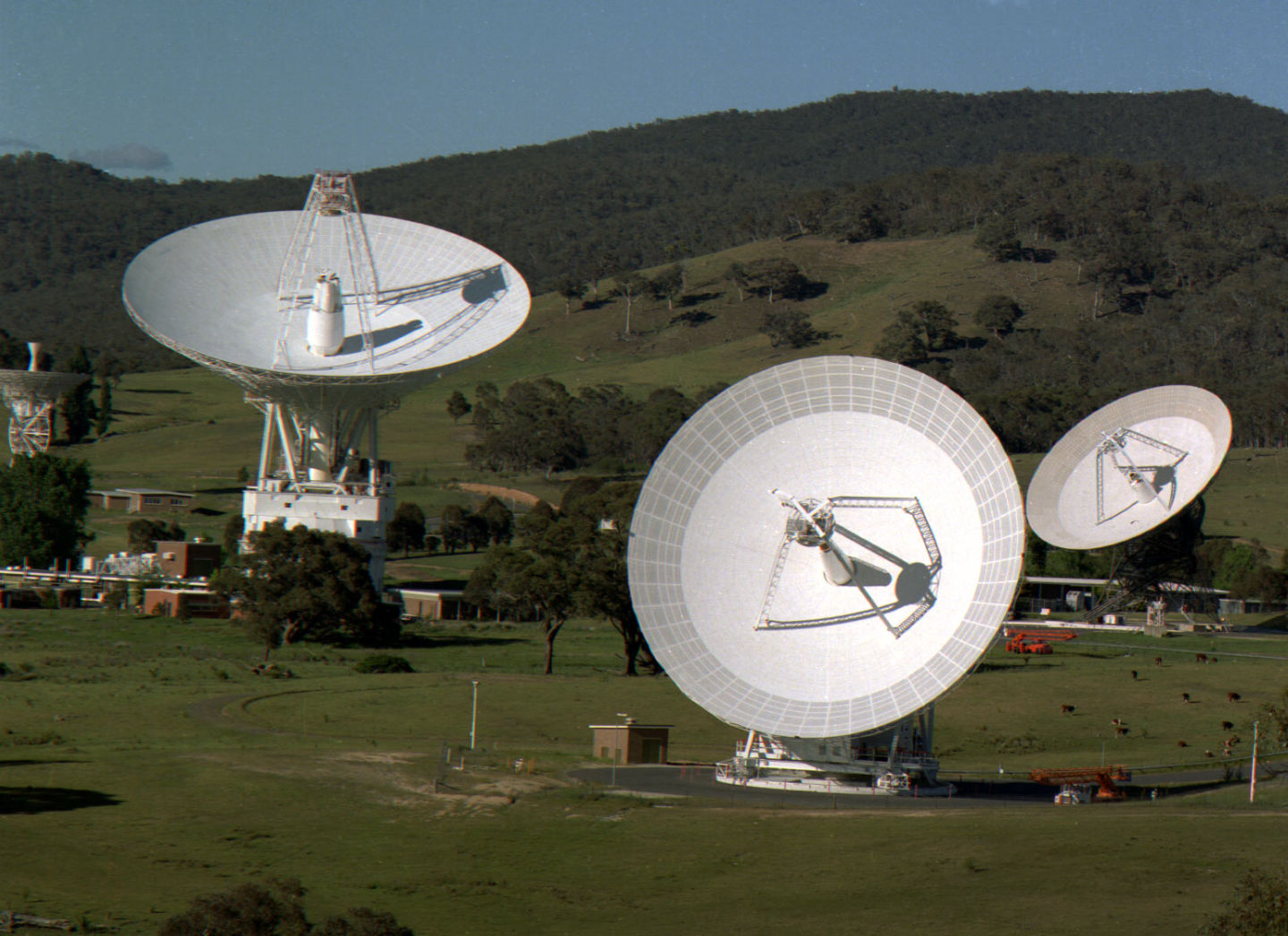
Canberra DSN Plates
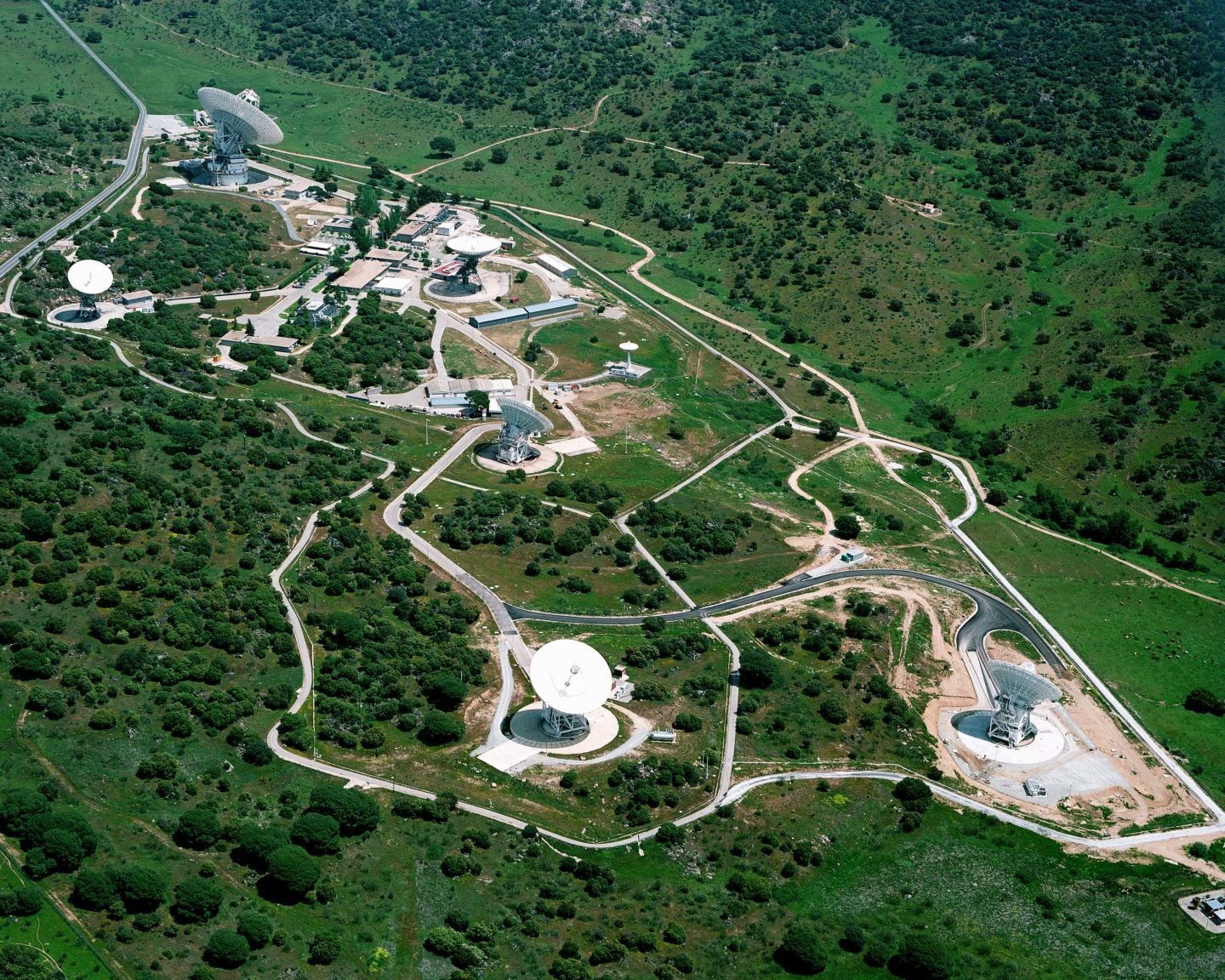
DSN complex in Madrid
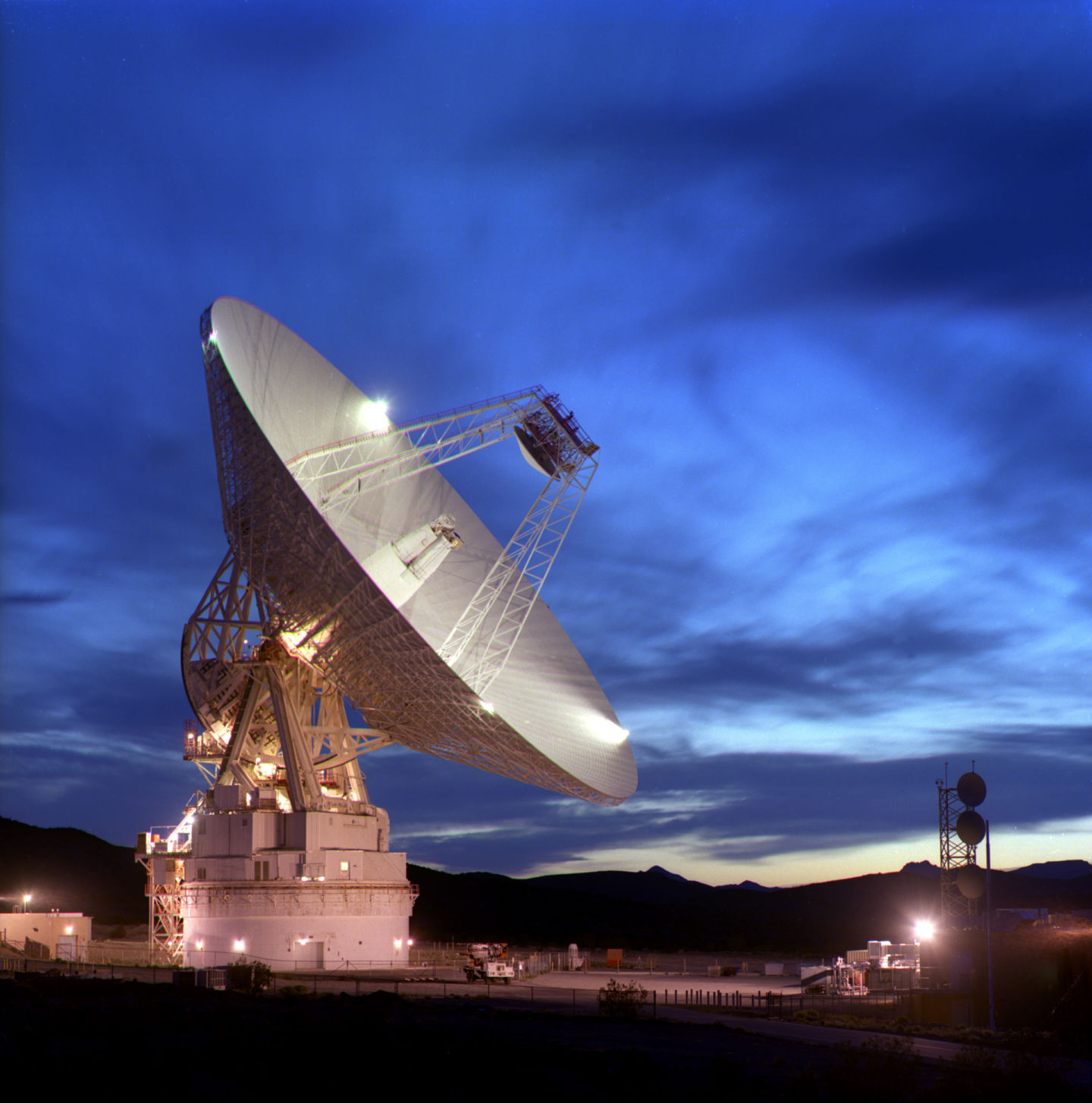
DSN in Goldstone
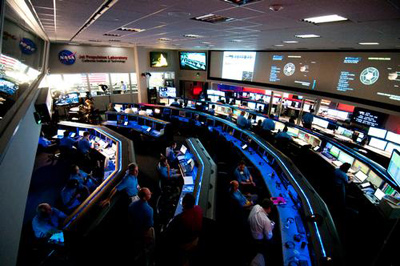
Cameraman at the Jet Propulsion Laboratory
Radio, and what will happen after it
This story is not new. The history of long-distance space communications consists of a constant struggle to increase frequencies and shorten wavelengths. Explorer 1 used 108 MHz. Then NASA introduced large antennas with better gain, supporting frequencies from the L-band, from 1 to 2 GHz. Then came the turn of the S-band, with frequencies from 2 to 4 GHz, and then the agency switched to the X-band, with frequencies of 7-11.2 GHz.
Today, space communications systems are undergoing changes again - now they are switching to the 26-40 GHz band, the K a-band. “The reason for this trend is that the shorter the wavelength and the higher the frequency, the faster the data transfer rate can be obtained,” says Abraham.
There are reasons for optimism, given that historically the speed of development of communications at NASA has been quite high. Research work from 2014 from the Jet Propulsion Laboratory gives the following bandwidth data for comparison: if we used Explorer 1 connection technology to transfer a typical photo from an iPhone from Jupiter to Earth, it would take 460 times longer than the current age The universe. Pioneers 2 and 4 from the 1960s would have taken 633,000 years. Mariner 9 of 1971 would have coped with this in 55 hours. Today, the MRS will take three minutes to do this.
The only problem, of course, is that the amount of data received by spacecraft is growing just as fast, if not faster, than the growth in their transmission capabilities. Over 40 years of operation, Voyagers 1 and 2 have given out 5 TB of information. The NISAR Earth Science satellite, scheduled for launch in 2020, will produce 85 TB of data per month. And if the Earth satellites are quite capable, the transfer of such a volume of data between the planets is a completely different story. Even a relatively smart MPC will transfer 85 TB of data to Earth for 20 years.
“The estimated data transfer rate during Mars exploration in the late 2020s and early 2030s will be 150 Mbps or higher, so let's calculate,” says Abraham. “If an MRS spacecraft at a maximum distance from us to Mars can send approximately 1 Mbit / s to a 70-meter antenna on Earth, then to organize communications at a speed of 150 Mbit / s you will need an array of 150 70-meter antennas. Yes, of course, we can come up with clever ways to reduce this absurd amount a little, but the problem obviously exists: the organization of interplanetary communications at a speed of 150 Mbit / s is extremely difficult. In addition, we have a range of permitted frequencies. "
As Abraham demonstrates, working in the S or X band, one mission with a bandwidth of 25 Mbit / s will occupy the entire available spectrum. In the K a range, there is more space, but only two satellites of Mars with a bandwidth of 150 Mbit / s will occupy the entire spectrum. Simply put, the work of the interplanetary Internet will require more than just radio - it will rely on lasers.
The appearance of optical communications
Lasers sound futuristic, but the idea of optical communications can be traced to the patent filed by Alexander Graham Bell in the 1880s. Bell developed a system in which sunlight, focused to a very narrow beam, was directed to a reflecting diaphragm that vibrated due to sounds. Vibrations caused variations in the light passing through the lens into a coarse photodetector. Changes in the resistance of the photodetector changed the current passing through the phone.
The system was unstable, the volume was very low, and Bell eventually abandoned the idea. But, after almost 100 years, armed with lasers and optical fiber, NASA engineers returned to this old concept.
“We knew about the limitations of radio frequency systems, so the Jet Propulsion Laboratory in the late 1970s, early 1980s, began to discuss the possibility of transmitting messages from deep space using space lasers,” said Abraham. To better understand what is possible and what is not in optical communications in deep space, at the end of the 1980s, the laboratory organized a four-year study, Deep Space Satellite Relay Satellite System (DSRSS), "Satellite Transmitter System for Deep Space". The study had to answer critical questions: what about the weather and visibility problems (after all, radio waves can easily pass through the clouds, while lasers do not)? What if the Sun-Earth-Probe angle gets too sharp? Will a detector on Earth distinguish a weak optical signal from sunlight? And finally, how much will it all cost and will it be worth it? “We are still looking for answers to these questions,” admits Abraham. “However, the answers more and more confirm the possibility of optical data transmission.”
DSRSS suggested that a point located above Earth’s atmosphere would be best for optical and radio communications. It was stated that the optical communications system installed at the orbital station would work better than any terrestrial architecture, including cult 70-meter antennas. In a near-earth orbit it was supposed to deploy a 10-meter plate, and then raise it to geosynchronous. However, the cost of such a system - consisting of a satellite with a plate, a launch rocket and five user terminals - was excessive. Moreover, the study did not even include the cost of the necessary auxiliary system, which would enter into operation in the event of a satellite failure.
As this system, specialists from the Laboratory began to look at the ground-based architecture described in the Analytical Report “Ground Based Advanced Technology Study (GBATS)] conducted at the Laboratory at about the same time as DRSS. The people who worked on GBATS put forward two alternative proposals. The first is the installation of six stations with 10-meter antennas and one-meter spare antennas located 60 degrees from each other around the entire equator. The stations needed to be built on mountain tops, where at least 66% of the days of the year are fair. Thus, 2-3 stations will always be visible to any spacecraft, and they will have different weather conditions. The second option is nine stations, clusters of three, and located 120 degrees from each other. The stations within each group should be located 200 km from each other, so that they were in direct view, but in different weather cells.
Both GBATS architectures were cheaper than the space approach, but they also had problems. First, since the signals needed to pass through the atmosphere of the Earth, reception in the daytime will be much worse than at night, because of the lighted sky. Despite the ingenious location, ground-based optical stations will depend on the weather. The spacecraft directing the laser to the ground station will eventually have to adapt to bad weather conditions and re-establish communication with another station that the clouds do not cover.
However, regardless of the problems, the DSRSS and GBATS projects laid a theoretical foundation for optical systems for remote space communications and advanced engineering developments at NASA. It remained only to build a similar system and demonstrate its performance. Fortunately, there were only a few months left.
Project implementation
By that time, optical data transmission in space had already taken place. The first experiment was conducted in 1992, when the Galileo probe was heading to Jupiter, and deployed its high-resolution camera to Earth to successfully receive a set of laser pulses sent from the 60 cm telescope of the Table Mountain Observatory and from the 1.5 m telescope of the USAF Starfire Optical Range in New Mexico. At this point, Galileo was 1.4 million km from Earth, but both laser beams fell into its camera.
The Japanese and European space agencies were also able to establish an optical link between ground stations and satellites in Earth orbit. Then they were able to establish a connection at a speed of 50 Mbps between the two satellites. A few years ago, the German team established a 5.6 Gbps coherent optical bidirectional link between the NFIRE satellite in Earth orbit and a ground station in Tenerife (Spain). But all these cases were associated with the near-Earth orbit.
The very first optical communication connecting the ground station and the spacecraft in orbit near another planet of the solar system was installed in January 2013. A black and white image of Mona Lisa with a size of 152x200 pixels was transmitted from the Next Generation Range Satellite Lasers Station located at the Goddard Space Flight Center in NASA to the Lunar Reconnaissance Orbiter (LRO) at a speed of 300 bps. Communication was one-way. LRO sent the image received from the Earth back via normal radio communication. The image needed a little software error correction, but even without this coding it was easy to recognize. And at that time it was already planned to launch a more powerful system to the moon.
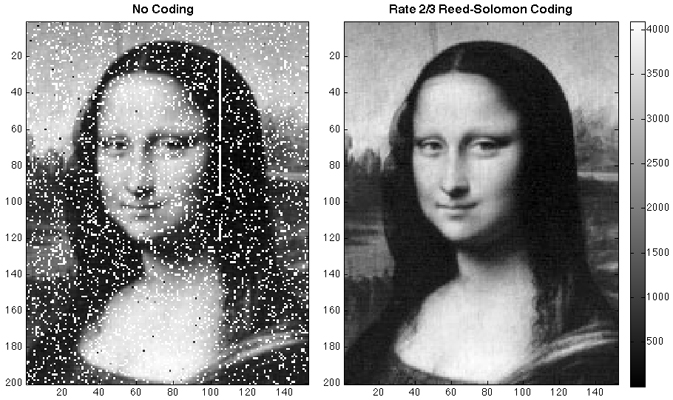
From the “Lunar reconnaissance orbiter” project in 2013: to clear information from transmission errors introduced by the Earth’s atmosphere (left), scientists from the Goddard Space Flight Center applied Reed-Solomon error correction (right), which is actively used in CD and DVD. Typical errors include missing pixels (white) and false signals (black). A white bar indicates a small pause in the transmission.
" The lunar atmosphere and dust environment researcher " (LADEE) entered the moon's orbit on October 6, 2013, and just a week later launched its pulsed laser for data transmission. At this time, NASA tried to organize two-way communication at a speed of 20 Mbit / s in that direction and a record speed of 622 Mbit / s in reverse. The only problem was the short lifetime of the mission. The LRO optical connection worked in just a few minutes. LADEE exchanged data with its laser for 16 hours in a bag in 30 days. This situation should change when the Laser Communication Demonstration Satellite (LCRD), scheduled for June 2019, is launched. His task is to show how future communications systems in space will work.
LCRD is being developed at NASA's Jet Propulsion Laboratory in collaboration with the Lincoln Laboratory at MIT. It will have two optical terminals: one for communication in earth orbit, the other for deep space. The first will have to use differential phase shift keying (DPSK). The transmitter will send laser pulses with a frequency of 2.88 GHz. According to this technology, every bit will be encoded by the phase difference of successive pulses. It will be able to work at a speed of 2.88 Gbit / s, but this will require a lot of energy. Detectors are able to recognize the difference between pulses only in high-energy signals, because DPSK works perfectly with near-earth communications, but this is not the best method for deep space, where it is problematic to store energy. The signal sent from Mars will lose energy until it reaches the Earth, so LCRD will use a more efficient technology, phase-pulse modulation, to demonstrate optical communication with deep space.
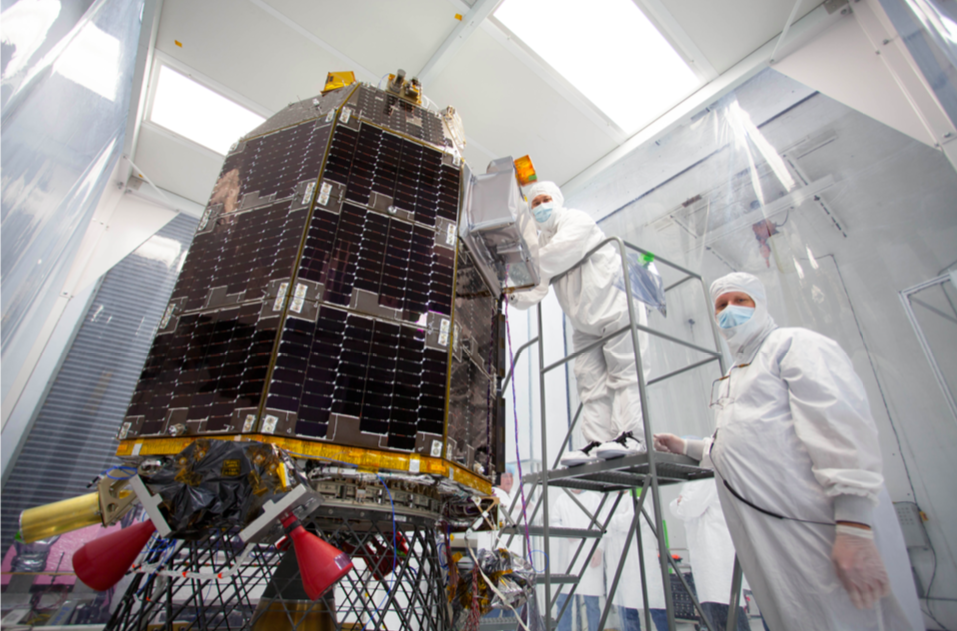
NASA engineers prepare LADEE for testing
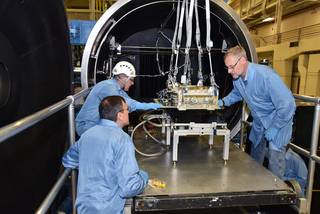
In 2017, engineers tested flight modems in a thermal vacuum chamber.
“Essentially, this is counting photons,” explains Abraham. - The short period allocated for communication is divided into several time periods. To get the data, you just need to check if the photons collide at each of the intervals with the detector. So the data is encoded in the FIM ". It looks like Morse code, only at ultra-fast speed. Either at some point there is a flash, or not, and the message is encoded by a sequence of flashes. “And although this is much more immediate than DPSK, we can still organize optical communications at speeds of tens or hundreds of Mbit / s at a distance from Mars,” adds Abraham.
Of course, the LCRD project is not only these two terminals. It should also work as an Internet site in space. There will be three stations on the ground with LCRD: one in White Sands in New Mexico, one on Table Mountain in California, and one on the island of Hawaii or on Maui. The idea is to check the switch from one ground station to another in case of bad weather at one of the stations. The mission will also verify the operation of the LCRD as a data transmitter. The optical signal from one of the stations will go to the satellite and then be transmitted to another station - and all this via optical communication.
If data transfer fails right away, LCRD will store it and transmit it when the opportunity arises. If the data is urgent, or there is not enough space in the storage, LCRD will send it immediately through its K a- band antenna. So, the forerunner of future satellite transmitters, the LCRD will be a hybrid radio-optical system. It is this NASA unit that needs to be placed in orbit around Mars in order to create an interplanetary network that supports deep space exploration by humans in the 2030s.
We put Mars in online
Over the past year, the Abraham team wrote two papers describing the future of distant space communications, which will be presented at the SpaceOps conference in France in May 2019. One describes the long-range space communications in general, the other ("The Martian interplanetary network for the era of humanity research - potential problems and solutions ") proposed a detailed description of the infrastructure that can provide a similar Internet service for astronauts on the Red Planet.
Estimates of the peak average data transfer rate turned out to be around 215 Mbit / s for download and 28 Mbit / s for download. The Martian Internet will consist of three networks: WiFi, covering a surface area of research, a planetary network transmitting data from the surface to Earth, and a terrestrial network, a long-range space communication network with three sites responsible for receiving this data and sending responses back to Mars.
“When developing such an infrastructure, there are many problems. It must be reliable and stably operating, even at the maximum distance to Mars of 2.67 AU. during the periods of the upper solar conjunction, when Mars hides behind the Sun, ”says Abraham. Such a connection occurs every two years and completely breaks the connection with Mars. “Today I can't handle it. All landing and orbital stations that are on Mars simply lose contact with Earth for about two weeks. With optical communication, the loss of communication due to the solar connection will be even longer, from 10 to 15 weeks. ” For robots, such gaps are not particularly scary. This isolation does not cause them problems, because they do not start to get bored, do not experience loneliness, they do not need to see their loved ones. But for people, it's completely wrong.
“Therefore, we theoretically allow the commissioning of two orbital transmitters located in a circular equatorial orbit at 17,300 km above the surface of Mars,” continues Abraham. According to the study, they should weigh 1500 kg each , and have on board a set of terminals operating in the X-band, K a -range , and the optical range, and be powered by solar panels with a capacity of 20-30 kW. They must support a protocol that is resistant to delays (Delay Tolerant Network Protocol) - in fact, TCP / IP, designed to work with large delays that will inevitably occur in interplanetary networks. Participating orbital stations should be able to communicate with astronauts and vehicles on the surface of the planet, with ground stations and with each other.
“Such a cross connection is very important because it reduces the number of antennas required to organize data transmission at a speed of 250 Mbit / s,” says Abraham. His team estimates that to receive data at a speed of 250 Mbit / s transmitted from one of the orbital transmitters will require an array of six 34-meter antennas. This means that NASA will need to build three additional antennas at long-distance satellite communications sites, but it takes years to build them and they are extremely expensive. “But we think that two orbital stations can share data between themselves and send them simultaneously at 125 Mbps, when one transmitter will send one half of a data packet, and the other the other,” Abraham says.Even today, 34-meter long-range space communications antennas can simultaneously receive data from four different spacecraft at once, with the result that three antennas will be required to complete the task. “To receive two transmissions at 125 Mbps from the same sky, you need as many antennas as you need to receive one transmission,” explains Abraham. “More antennas are needed only if you need to communicate at a higher speed.”
To cope with the solar connection problem, the Abraham team suggested launching a satellite transmitter to the L4 / L5 point of the Sun-Mars / Sun-Earth orbit. Then during periods of connection, it can be used to transmit data around the Sun, instead of sending signals through it. Unfortunately, during this period the speed will drop to 100 Kbps. Simply put, it will work, but bad.
In the meantime, future astronauts on Mars will have to wait for a photo of a kitten a little more than three minutes, not counting delays, which can be up to 40 minutes. Fortunately, until the time when mankind’s ambitions drive us further beyond the Red Planet, the interplanetary Internet will already work well most of the time.
Source: https://habr.com/ru/post/444960/
All Articles